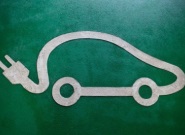The new report from analysts IDTechEx is a world first in revealing this exciting future for component and system suppliers, product integrators and system integrators. Here is the future of both vehicles and green technology including the ultimate convenience of never recharging or refuelling again and of poor countries and remote regions being disadvantaged no more. Indeed, the ultimate autonomous vehicle is turning out to be energy autonomous too. The new IDTechEx report is called, “Energy Independent Electric Vehicle Technology Roadmap 2016-2036”.
IDTechEx Chief Executive Raghu Das says, “We have taken note of about 150 projects in all, from past successes and failures to vehicles on sale today and concept vehicles and the result is fascinating. They are fairly evenly distributed between land, water and air vehicles with enormous breadth from underwater vehicles to agricultural robots, manned aircraft and autonomous unmanned airships, even inflatable aircraft becoming energy independent electric vehicles.”
He advises that, “Most use lithium-ion batteries for storage with the last bastion of a few lead acid users in EIVs being at sea where weight is not a problem. The most promising lighter-weight batteries beyond lithium-ion are lithium sulfur and these are being seen first in airborne EIVs. Solid state batteries will evolve further to become load-bearing structures – two items for the weight, space and cost of one. However, the leading edge of photovoltaic technology – the favorite primary energy-gathering technology for EIVs - is seen in both solar land racers and solar aircraft. That means CIGS vying with GaAs and ultra-thin single crystal silicon across an increasing number of current vehicles, though some use flexible amorphous silicon.”
“In the report, Energy Independent Electric Vehicle Technology Roadmap 2016-2036, we carefully appraise what comes next in all EIV technologies from multi-mode energy harvesting to extreme lightweighting and the ultimate powertrain efficiency boosted by new forms of regenerative harvesting in the vehicles. EIVs are starting to sell as they circumnavigate the world, stay aloft for five years and otherwise outperform in more than just cost and green credentials. Technologists should grab this opportunity.”
Amongst detailed analysis and assessment of key EIV technologies, the report also contains a ten year roadmap of development for 2016-2026 and an outlook to 2036. To learn more visit www.IDTechEx.com/eivtech.
Also attend the forthcoming IDTechEx Show! USA 2015 on 18-19 November in Santa Clara, CA, with many co-located conferences and a large combined exhibition including Electric Vehicles: Everything is Changing.
29 Декабря 2025 | понедельник | 19:10


